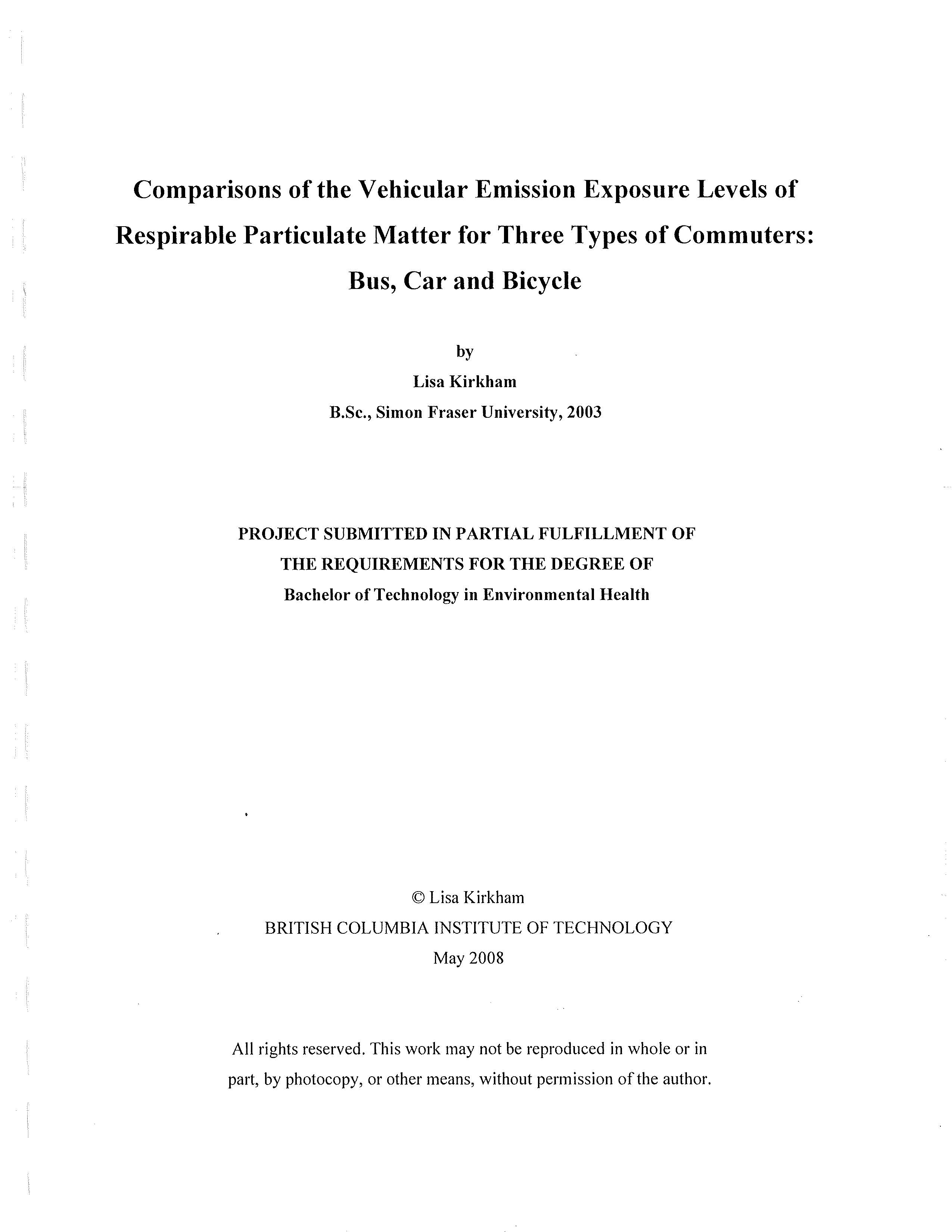Comparisons of the Vehicular Emission Exposure Levels of Respirable Particulate Matter for Three Types of Commuters
Bus, Car and Bicycle
DOI:
https://doi.org/10.47339/ephj.2014.236Keywords:
Air quality, Vehicular emissions, Particulate matter, Commuter exposureAbstract
Previous studies implicate vehicular emissions as possible causes for asthma and asthmatic attacks in children, as well as elevated risks of adverse pregnancy outcomes, certain cancers, cardiovascular disease and even death. Due to the negative health effects associated with vehicular emissions particulate matter air pollutants were analyzed in an effort to establish which mode of transportation provides the least amount of vehicular emission exposure. The results determined the mode of transportation which has the least negative impact upon public health. The exposure levels of airborne particulate matter were examined between three types of commuters, those that traveled within the automobile environment by both car and bus and those that traveled in the outdoor environment by bicycle. Respirable particulate matter is an indicator species for both other harmful gases and ultra fine air particulates of vehicular emissions and therefore was chosen as the vehicular pollutant to be examined in the study. The DustTrak™ Aerosol Flow Monitor 8520 continuously sampled the exposure levels within the breathing zone of the researcher for the three modes of transportation during multiple, 3 hour, Wednesday evening rush hour intervals on the Stanley Park Causeway, in Vancouver B.C, during the month of January 2008. The results of the primary analysis of mean exposure levels were 0.0307, 0.0240 and 0.0175 mg/m3 for bus, bicycle and car respectively. The particulate matter exposure levels were then analyzed utilizing Kruskal-Wallis One-Way ANOVA, Scheffe's Multiple Comparison Test and Tukey-Kramer Multiple-Comparison Test which determined the probability level as less than 0.000000 and therefore the null hypothesis, there is no difference between exposure levels from vehicular emissions for commuters travelling by bus, car or bicycle, was rejected and a statistically significant difference between the three exposure levels was found. Although the particulate exposure levels were well below the maximum levels established by Health Canada, from the perspective of public health the car was the safest method of transportation with respect to particulate matter exposure levels.
Downloads

Downloads
Published
How to Cite
Issue
Section
Categories
License
Copyright (c) 2008 Lisa Kirkham

This work is licensed under a Creative Commons Attribution-NonCommercial-NoDerivatives 4.0 International License.
Content on this site is licensed under a Creative Commons Attribution-NonCommercial-NoDerivatives 4.0 (CC BY-NC-ND 4.0) license.
